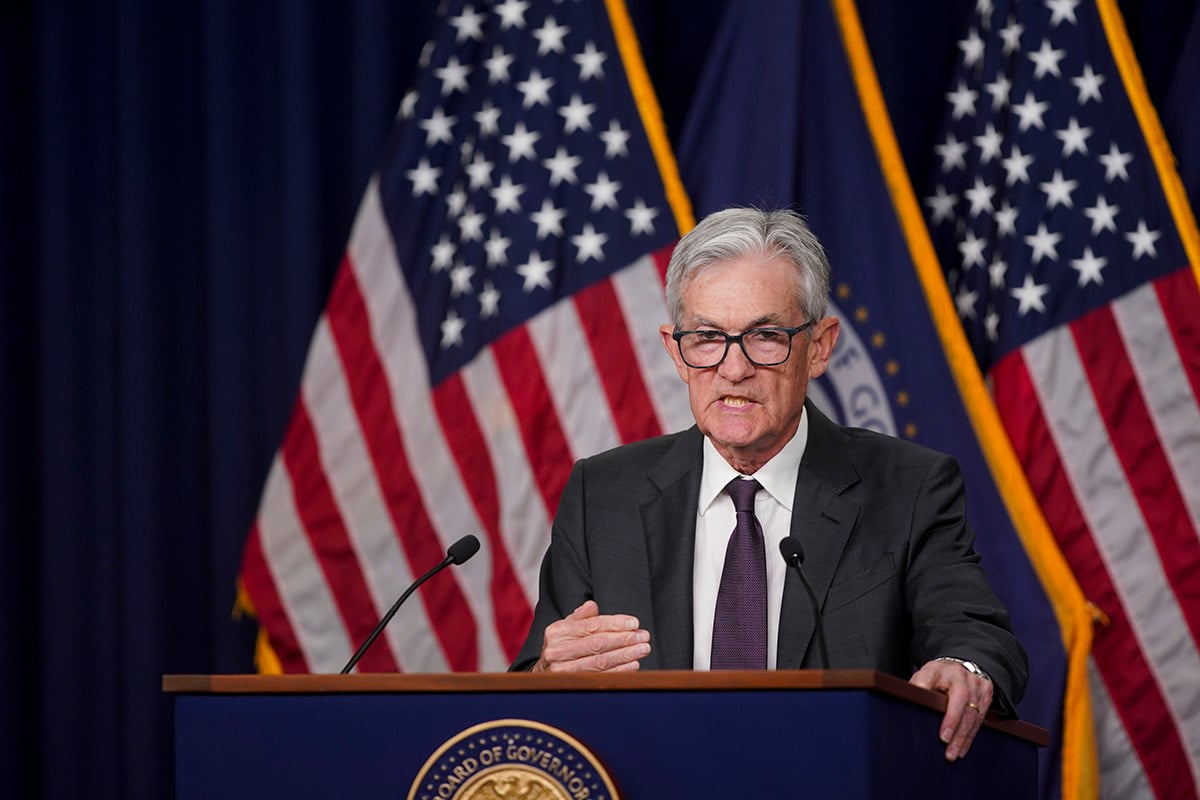Less than two weeks after the International Monetary Fund (IMF) announced a US$17.5 billion bailout loan for Ukraine, the central bank tightened capital controls to prevent the country from running out of foreign currency.
In spite of what has been pledged, Ukraine hasn't received a major injection of IMF cash since a $1.4 billion disbursement on Sept. 3, the lender's website shows. With its foreign reserves dropping 61 percent, to $6.4 billion, in the four months through January, the country's “cupboard is basically bare,” said Timothy Ash from Standard Bank Group Plc.
Central bank Governor Valeriya Gontareva announced new limits on the amount of foreign exchange available to importers, and banned banks from lending money for clients to buy foreign currency. More restrictions may follow as the country's economy contracts amid a deadly conflict with pro-Russian rebels in the country's east, Gontareva said on Monday. The hryvnia fell as much as 11 percent per dollar and bonds tumbled.
“Aid can't come fast enough,” Richard Segal, head of emerging-markets credit strategy at Jefferies International Ltd. in London, said by phone Monday. “The way things are going, the central bank may need to declare a moratorium on money leaving the country, perhaps through an interruption in debt servicing as Argentina did.”
Ukraine's $2.6 billion of 9.25 percent bonds due in July 2017, the sovereign's benchmark security for foreign investors, dropped for a seventh day to an all-time low of 41.5 cents on the dollar at 7:24 p.m. in Kiev, increasing the yield to 56.43 percent. The hryvnia weakened to a record 31.5 per dollar on Monday before recovering to 28, the same level at which it closed on Friday, according to data compiled by Bloomberg.
IMF Lifeline
The IMF-led aid package, announced on Feb. 12, totals $40 billion when including bilateral deals with nations as well as about $15 billion in savings expected from negotiations the country is pursuing with bond investors.
The Washington-based lender has stalled payouts under a previous funding plan as the nation held presidential elections in October, lawmakers delayed the passage of this year's budget, and while the sides negotiated the second bailout.
“The implementation of strong policies and reforms under the new IMF program, including a flexible exchange rate, will help the economy adjust and lay the basis for a return of growth and confidence,” an IMF spokesman said by email on Monday. “However, in the short term, tightening of the administrative measures on a temporary basis may be necessary to support the foreign exchange market.”
Ukraine's debt is poised to extend declines as investors are underestimating losses in the country's planned debt reorganization, analysts at Goldman Sachs Group Inc. and JPMorgan Chase & Co. said on Friday in separate reports.
“Ukraine is bankrupt, and the only reason the bonds are trading at 40-45 is because of IMF involvement,” Dmitri Barinov, a money manager who oversees $2.6 billion of emerging-market bonds at Union Investment Privatfonds GmbH in Frankfurt, said by email on Monday. “Ukraine has neither the possibility nor the willingness to pay its debt, but will be forced to restructure under IMF conditions.”
The hryvnia's 44 percent depreciation per dollar this year, following a 48 percent drop in 2014, is driving up the prices of imports and energy, while making external debt payments more difficult for Ukraine. Governor Gontereva yielded control of the currency earlier this month, allowing it to weaken in an IMF-backed move that helped eliminate an unofficial street market for currency transactions.
“The National Bank of Ukraine has few options, with the West still dragging its feet over financial support,” Ash, the chief emerging-markets economist at Standard Bank in London, said by email. “History will judge Western leaders very poorly for how they have managed” to help Ukraine, he said.
–With assistance from Krystof Chamonikolas in Prague and Andrew Mayeda in Washington
Complete your profile to continue reading and get FREE access to Treasury & Risk, part of your ALM digital membership.
Your access to unlimited Treasury & Risk content isn’t changing.
Once you are an ALM digital member, you’ll receive:
- Thought leadership on regulatory changes, economic trends, corporate success stories, and tactical solutions for treasurers, CFOs, risk managers, controllers, and other finance professionals
- Informative weekly newsletter featuring news, analysis, real-world case studies, and other critical content
- Educational webcasts, white papers, and ebooks from industry thought leaders
- Critical coverage of the employee benefits and financial advisory markets on our other ALM sites, PropertyCasualty360 and ThinkAdvisor
Already have an account? Sign In Now
*May exclude premium content© 2025 ALM Global, LLC, All Rights Reserved. Request academic re-use from www.copyright.com. All other uses, submit a request to [email protected]. For more information visit Asset & Logo Licensing.





